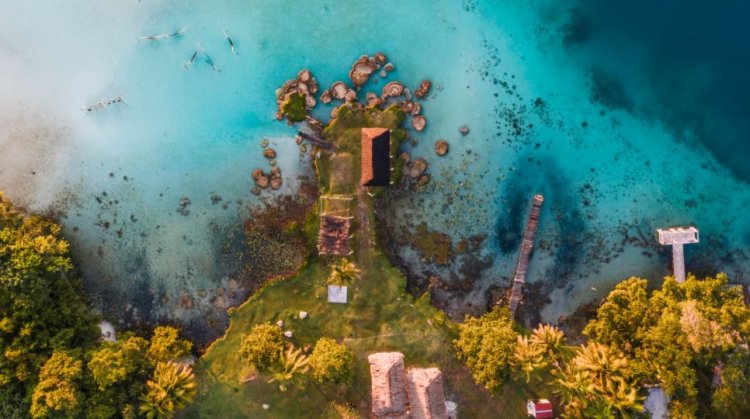Mexico's three-billion-year-old underwater lifeforms
Famous for its brilliant seven shades of blue, Lake Bacalar is home to an ancient population of stromatolites that are around 3.5 billion years old.

he beauty of Lake Bacalar, according to Claudio Del Valle, goes deeper than the Mexican lagoon's seven brilliant shades of blue, which range from bright turquoise to deep cobalt. Actually, the local tour guide says, up to 100m deeper – to the limestone bottom of the lake, which is home to the oldest life on the planet. Del Valle says that the most important thing when visiting the long, skinny lake near the Belize border is to leave no trace. He spent years taking groups on stand-up paddle boarding tours before dawn as the sun threw early light over the lagoon and sparkling thalassic hues matured out of the inky night.
"Thanks to the paddle boarding, I had the chance to explore most of the lagoon… it was so unique, so majestic, so beautiful," he said. "The clarity of the water makes this unique colouration of blue to green; it was delightful just to appreciate."
But the "Lake of Seven Colours" is under grave threat, Del Valle says, which could not only permanently change the colour of the lake but also lead to the destruction of an ancient population of stromatolites, a living fossil that predates humans, dinosaurs and even plants.
Del Valle moved to Bacalar in 2017 following the 7.1-magnitude Puebla earthquake, which left him with post-traumatic stress. On the advice of a psychologist friend, he departed his home of San Cristóbal de las Casas, 700km south-west of Bacalar, in search of a more tranquil environment. He was blown away by what he found. "It was paradise," he said, of seeing Bacalar's lagoon for the first time. "You couldn't believe the sunrise and the sunset, every one was so unique. But now I can see what is happening… it breaks my heart, it is wrong."
Lake Bacalar has been moving towards an ecological disaster for the past decade, according to Dr Luisa Falcón, a microbial ecologist at the National Autonomous University of Mexico in Merida. In November 2015, Mexico's federal environmental protection agency issued a pollution alert for the lake. The problem came to a head in June 2020, when Lake Bacalar's rich thalassic hues turned a dull brown. It still has not made a full recovery.
But if nothing is done, the damage could go far beyond the aesthetics of the brilliantly hued water, Falcón warns. Bacalar is home to the largest freshwater microbialite reef in the world – rock-like structures made by thousands of microbes that precipitate carbonate minerals. "Bacalar's microbialites have an age range between decades to more than 9,000 years old," she said. But it's the microbialite's living fossil counterpart, the stromatolites, that date back to "approximately 3.5 billion years old", making Bacalar's population the oldest evidence of life on Earth.
The stromatolites resemble cauliflower – big, pillowy beige structures that grow upwards from the lagoon's limestone bottom of the lake. They look like rocks, but they are actually living things. The sediment layers itself millimetre by millimetre, with the aid of photosynthesising organisms called cyanobacteria, until the structures turn into a rocky underwater growth that can be seen on the surface of shallow water.
You may also be interested in:
• The Earth's oldest living lifeforms
• The animal resistant to cancer
• How climate change poisons our food
The cauliflower-like stromatolites only still exist in a few locations globally – and Bacalar's population reveal history frozen in time, such as the temperature or the geochemical composition of the water millions of years ago. That's because they actually preserve the physicochemical conditions of the water in their incredibly slow sedimentation process. Crucially, stromatolites also help recycle elements. The microbes that make up a stromatolite take carbon from the CO2 in the air and put it into the lake floor's carbonate to store it. Like trees, their above-water counterpart, stromatolites actively improve our environment.
But the problem facing stromatolites is two-fold, Falcón said. The lake is fed by a 450km underground river that is part of the world's largest water cave and tunnel system along the Yucatan Peninsula. This is actually good for stromatolites – the carbonate rock of the tunnels is thought to make them grow larger than normal, pillowing out on the surface of the lagoon.















